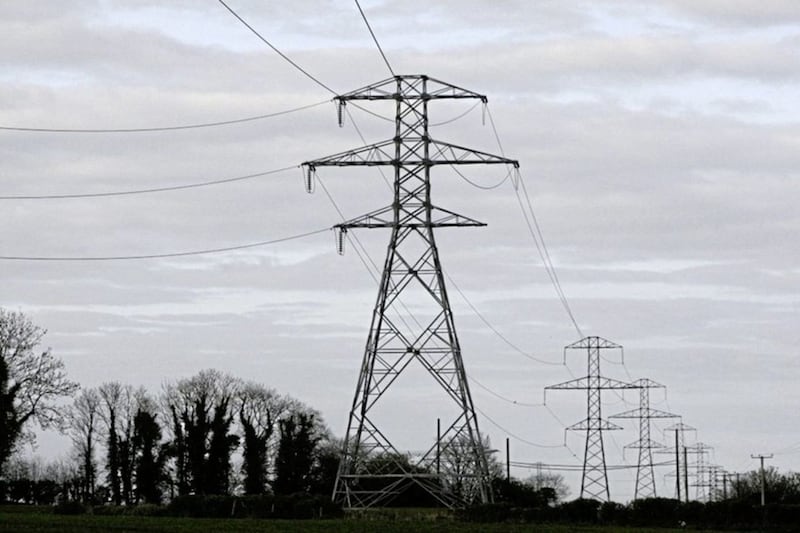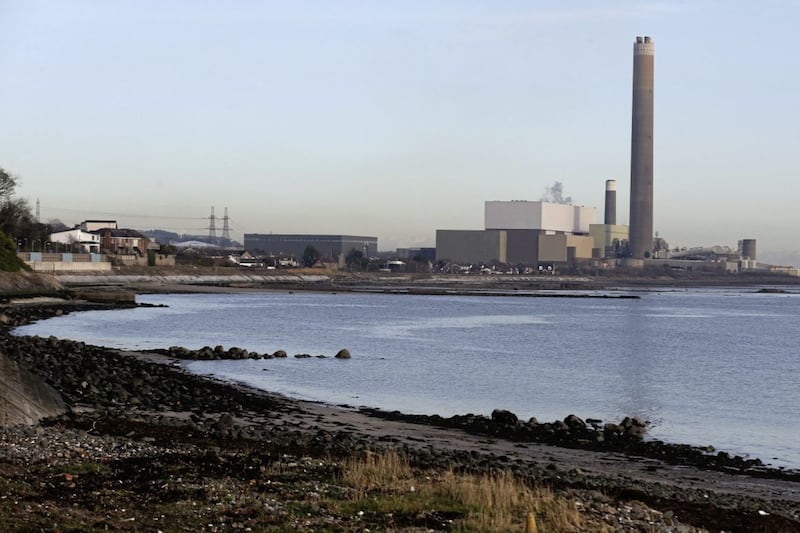UP at its control centre in the Castlereagh Hills, the electricity transmission operator SONI carries out one overriding function,which is to maintain a reliable, secure supply of power to homes and businesses.
SONI is only too aware of this imperative. It has constantly argued for instance for a new north-south interconnector to avoid the risk of black-outs. I would hazard a guess that no organisation in recent years has talked more about taking the right decisions to keep the lights on .
It is ironic, then, that the organisation is now accused of helping to operate a policy which, it is claimed, risks plunging homes into darkness, bringing industrial equipment to a halt and generally causing widespread disruption to everyday life.
The precise complaint against SONI, along with the Utility Regulator, is that they seem ready to take a chance that electricity demand can be met in the depths of winter without the support of the two big coal fired units at Kilroot. It has been argued that since Kilroot has been supplying such a substantial proportion of our power needs, it would be reckless to try and get by without the 514 megawatts of capacity the plant can provide.
There seems to be some force to the claim. As I write, in the last 24 hours the two main generators at the station have been supplying a quarter of our power needs. So on the face of it, our dependence on Kilroot looks pretty real.
The president of AES UK and Ireland, Ian Luney, clearly believes his plant outside Carrickfergus is required for our peace of mind. He has said that: “With the likely absence of any significant and reliable new generation in the next four years and a north-south interconnector that isn’t expected to come online until 2021, we are concerned that the removal of capacity at Kilroot and Ballylumford could contribute to a significant risk to the security and stability of supply in Northern Ireland.”
Mr Luney’s concern has been echoed by a number of local politicians. Some of the most vocal represent the area where Kilroot is based and among other things are naturally reflecting the worries of their constituents. But it is fair to say that even among those detached from political considerations, there is a degree of nervousness about Kilroot being offline though ultimately that decision is down to AES.
It’s worth pointing out how we got here. Last December the transmission operators on this island, SONI and Eirgrid, staged an auction to determine which generators would get vital capacity contracts which allow them to cover their fixed costs. It was a new way of allocating the payments and was introduced as part of the reforms brought in with the new integrated single electricity market or I-SEM.
AES was unsuccessful with three units, the two large oil/coal burning generators at Kilroot and a smaller one at Ballylumford. That failure has proved painful for AES. For the two units at Kilroot, the income it has lost out on, according my calculations, is around £22 million over the 16-month period covered by the auction. The blow has prompted AES to propose the closure of Kilroot.
It wasn’t the only company to suffer disappointment. Viridian failed to win a contract for one its two big units at Huntstown in Dublin. It has applied for permission to close both of them. In addition the Irish state controlled utility ESB couldn’t attract contracts for two units, both of them in Co Cork. There’s no doubt however that the auction results have hit Northern Ireland generators disproportionately hard. Up here 25 per cent of offered capacity was unsuccessful compared to only 10 per cent down south.
The auction - which it is said will save electricity customers in Northern Ireland and the Republic €50m and €150m respectively - has been hailed as a success by the utility regulators CRU and NIAUR.
But now comes the hard bit. They will now have to decide whether to allow AES and Viridian a derogation from the Grid Code which requires generators to give three years notice before they shut down any plant.
The decision making here takes this form. The utility regulator, NIAUR, asks SONI for a report on the impact of allowing an early shutdown. That’s expected to take four to six weeks. In its report, SONI will assess, among other things, system security, economic and strategic implications.Then it is the responsibility of NIAUR to approve or reject the request for the derogation.
SONI recognises the system is at its most vulnerable when there is high demand and low wind. It has looked at a couple of days last month when that occurred. On one of them Coolkeeragh was also off supply. It then calculated what would have happened if, in addition, the two main units at Kilroot had been unavailable. In both simulations, there was enough capacity to satisfy demand.
Overall the system operator says that for the auction period ending in September 2019, it can call on sufficient capacity to meet the security of supply standard. But can the system cope beyond that period without Kilroot?
SONI can’t know for certain since the auctions haven’t been conducted and the capacity has not been contracted. It presumably will however have to provide some sort of assessment to allow the Utility Regulator to make a judgment.
It’s a tough call. but once Kilroot has been given the go ahead to shut up shop, it may be gone for good. We should know the verdict of the Utility Regulator some time in April.
:: Jamie Delargy (delargyco@btinternet.com) is a freelance business broadcaster and commentator









